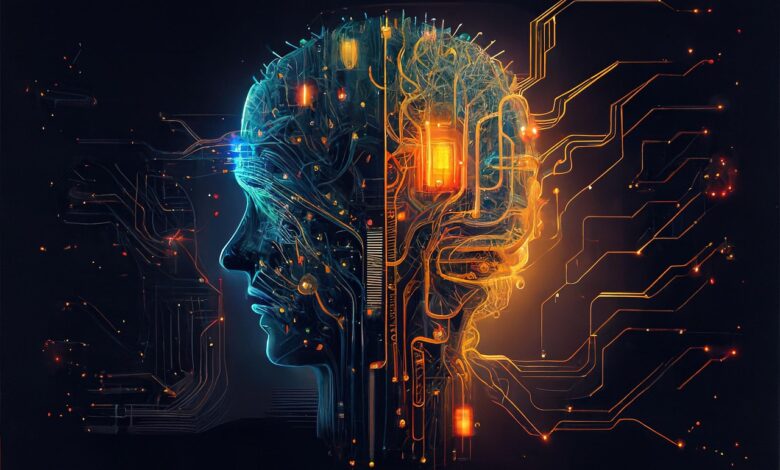
Companies are investing in Artificial Intelligence (AI) more and more every day, in the hopes that it will significantly boost productivity gains, like some magical formula to unlocking surging success. But, as AI continues to be integrated into the workforce across multiple industries and varying sectors, it highlights the necessity of human oversight rather than showcasing its ability to replace. The problem now becomes the ability of a workforce to adapt to AI systems that are still increasing productivity, further promoting ideas of human replacement and reducing employees’ eagerness to work with AI tools – not to mention, their lack of ability to effectively utilize these tools due to underdeveloped skills.
Reskilling, Mindset, and Leadership Buy-In
This issue is especially apparent in industries where AI is becoming a critical part of the job. AI is improving rapidly, but the pace of change is often outstripping the ability of many organizations to support it. While there is a clear push toward digital transformation, many leaders hesitate to invest in the training, tools, and strategies that would make this transformation possible. This disconnect between leadership and employees does more than impact productivity, it can also affect morale, confidence, and employee retention.
The Myth of Replaceability
Many people believe that AI will eventually take over their jobs, especially as it grows better each day. Actually, AI is most effective when it is used by people as a tool to handle repetitive tasks, analyze data, or even give quick answers to a simple problem, but it’s unlikely to ever be a complete replacement for people. We still need oversight and creativity, otherwise there will be no difference to what each company produces against their competitors.
If we look at a real-world example, AI is used in customer service to answer recurring questions and give quick responses for customers that might not need in-depth human input. But when the client needs more, like empathy, context, or complex problem solving, then a human representative is needed to be able to help the client as best as possible.
There are a number of fields where AI has been introduced, like healthcare and law, where it can act as a simple data processor because these fields are too complex for AI to handle on its own. Many cases in these fields need context as the same situation could lead to different outcomes depending on the context, and so human input is still very much required.
So now that we can see AI as just a tool rather than a replacement, companies should also change how they view workforce strategy. Rather than simply dumping AI tools that can often be too complex or convoluted on their workforce, companies should look to reskilling their workforce to be able to use those tools effectively.
Collaborating with AI is the fastest way to remove the doubt that employees might have about them being replaced, since they can see that AI tools cannot operate by themselves, and they can become more efficient than before.
Reskilling: A Strategic Investment, Not a Side Project
Many companies treat reskilling as an afterthought. But as AI becomes a larger part of the workplace, reskilling should be considered a core business function that is central to success.
A comprehensive reskilling strategy focuses on three key domains:
-
Technical Fluency (Not Just Coding)
A simple understanding of AI is rather important to someone to effectively use it, and while not everyone needs to become a data scientist, it’s important to be aware of how AI processes data and what its limitations are. Employees should know how AI systems operate, how to properly interact with them, and how to prompt it in the best way possible so that they get the results they are looking for. It is also helpful in picking up responses or outputs that are not what you are looking for so that they can recognize where to correct the AI system for the future.
-
Industry-Specific AI Applications
AI should be used differently according to the industry and sector in which an employee is working. For example, you cannot use AI in the same way in engineering as you would in marketing or even accounting. Employees need to be able to adapt to their individual requirements, and this is also true for those working within the same company. Large language models (LLMs) like ChatGPT are used differently in marketing teams compared to operations, so it’s important to understand that and know how to implement it correctly.
-
Soft Skills for the AI Age
This repeats what we have been saying throughout, and it’s that as AI is becoming more advanced, human skills are increasing in value as well. AI is taking over our repetitive and technical tasks, so those that exhibit better critical thinking, adaptability, and ethical reasoning to their work, are in higher demand.
The World Economic Forum predicts that by 2027, 44% of workers’ core skills will change so the organizations that focus on reskilling their workforce now will stay ahead of the curve.
Leadership Buy-In: The Key to Successful AI Integration
Even the best reskilling programs won’t succeed without leadership buy-in. Senior leaders must actively champion AI adoption, not just through budget approvals but by setting an example.
When executives engage with AI tools, share their own learning experiences, and demonstrate curiosity rather than fear, they set a powerful cultural tone. This encourages employees at all levels to embrace the change and experiment with AI. Furthermore, leaders should redefine what productivity means in the context of AI. Instead of focusing solely on efficiency, they should recognize that AI can be a tool for innovation, agility, and collaboration.
Leaders should also foster a safe environment for experimentation. This includes creating AI sandboxes where teams can test and explore AI applications without fear of failure. By encouraging risk-taking and providing feedback loops that reward learning over perfection, leaders





